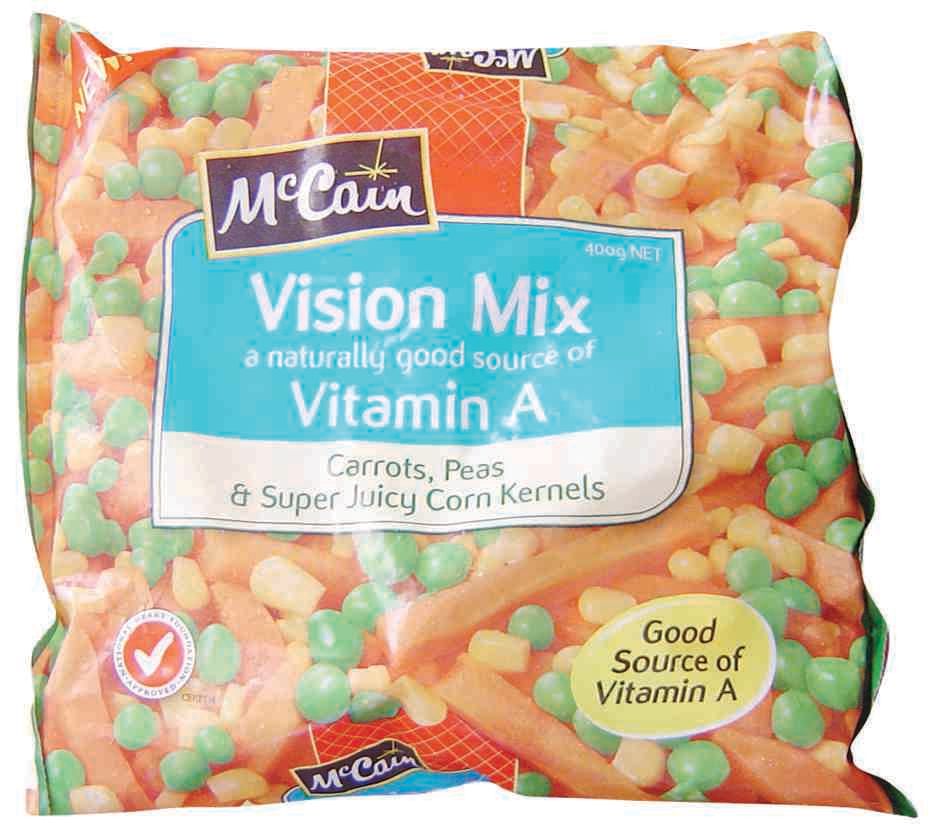Eye-Health Ingredients: Seeing Market Opportunities
There’s room for eye-health innovation in functional food and drink.

Although there has been considerable interest in dietary supplements for eye health in a number of countries, food and drinks positioned on an eye-health platform are still relatively few and far between. Innova Market Insights records that food and drink products marketed on their eye-health benefits accounted for only 2.5% of global launches on an active-health platform in the 12 months ending June 2011. While this did represent a double-digit increase over the previous 12-month period, and was more than double the total five years previously, clearly, there may be room for opportunity.
The highest level of activity was in North America, particularly the United States, which accounted for over 30% of launches, reflecting high levels of interest in functional food, concerns over aging, and a relatively well-developed processed-food market. Asia came next, with just under a quarter of launches, reflecting the traditional interest in health, awareness of links between particular ingredients and health issues, and the generally high level of new product activity. There was less activity in Europe, with eye-health launches accounting for just under one-fifth of the global total, despite ongoing interest in health. This perhaps reflects a still relatively confusing situation in the European Union with regard to health claims and the European Food Safety Authority.
Ingredients promoted for their eye-health benefits include vitamin A, beta-carotene, omega-3 fatty acids, blueberry anthocyanins, and, in the pet foods market, taurine. The eye-health category itself also tends to be divided into different targets, with eye development key in the baby food market; eye strain often an issue for young people, students, and adults, particularly in Asian markets; and growing concern over age-related issues, particularly age-related macular degeneration (AMD).
Perhaps surprisingly, pet food dominates launch activity on an eye-health platform, accounting for 36% of the total in the 12 months ending June 2011. Baby food also takes a significant share, at 26%. The remaining 38% of other products is led by soft drinks, fruit and vegetable products, and dairy products.
Within the pet food market, an increasing number of products are targeted at specific age groups and emphasize nutritional content. Products feature a range of eye-health ingredients, led by taurine, but also include vitamin A-sometimes more specifically beta-carotene-and omega-3 fatty acids. Many products feature multiple health claims for these ingredients, focusing on benefits such as skin and coat health and/or heart health, in addition to eye health.
In the baby food market, the focus is on eye development, often in combination with brain development. The sector is dominated by products containing omega-3 fatty acids, particularly DHA.
Outside the more specialized pet food and baby food sectors, Japan has led developments in the eye-health arena, focusing particularly on the link between blueberry anthocyanins and eye health. This connection has now been so strongly established by consumers that there is no need for specific claims, and many products are regarded as more or less mainstream. Activity has continued across most sectors of the Japanese food and drinks market, including soft drinks, dairy products, and confectionery.
In western markets, developments have primarily been based around high-antioxidant fruit and vegetable products, focusing particularly on vitamin A levels (sometimes mentioning the beta-carotene content) and linking them to eye health. Most launches have featured yellow and orange fruit and vegetables rich in natural carotenoids and antioxidants, including exotics such as goji berry, superfruits such as cherry, and more-standard products such as carrots.
Examples of this vary. For instance, Genesis Today’s Goji Berry Juice “for healthy eyes and a positive mind,” launched in the United States in 2010, features a proprietary blend of antioxidant and eye-health ingredients. A carrot juice from German retailer Edeka is marketed as rich in natural vitamin A, with beta-carotene “for sight and skin.”
Outside the soft drinks market, General Mills in the United States has been a pioneer, with the 2007 launch of Green Giant Healthy Vision, part of its Health Blends range of frozen vegetable mixtures offering particular health benefits. In the first half of 2011, the line was also joined by the Green Giant Valley Fresh Steamers Healthy Colors sub-brand. It features four fruit and vegetable mixes marketed as a good source of antioxidant vitamins A and C and linking vitamin A to healthy eyesight. This frozen vegetable trend has also spread to Australia, where McCain launched its Vision Mix frozen vegetable blend of carrots, peas, and corn kernels in early 2011, marketed as a naturally good source of vitamin A.
The market for food and drinks positioned on an eye-health platform remains extremely limited and fragmented, particularly if the more specialized applications in the pet food and baby food markets are excluded. Despite ongoing promotion of eye-health ingredients such as lutein, zeaxanthin, and other carotenoids, it is clear to see that they are still relatively low-profile in terms of consumer awareness, and that launch activity in the area continues to focus on ingredients better known and more broadly associated with eye health, such as vitamin A. Even if awareness of these more specific ingredients rises, and concerns over age-related issues such as AMD grow, it remains to be seen whether consumers may prefer to use supplements for maintaining eye health, rather than searching out food and drinks products targeted specifically to this need.
The Nutritional Outlook Podcast Episode 39: Nutritional Outlook's Ingredients to Watch in 2025
February 25th 2025In this episode, Nutritional Outlook interviews Scott Dicker, market insights director from market researcher SPINS, about ingredients and product categories nutraceutical and nutrition product manufacturers should watch in 2025.

.png&w=3840&q=75)

.png&w=3840&q=75)



.png&w=3840&q=75)



.png&w=3840&q=75)








